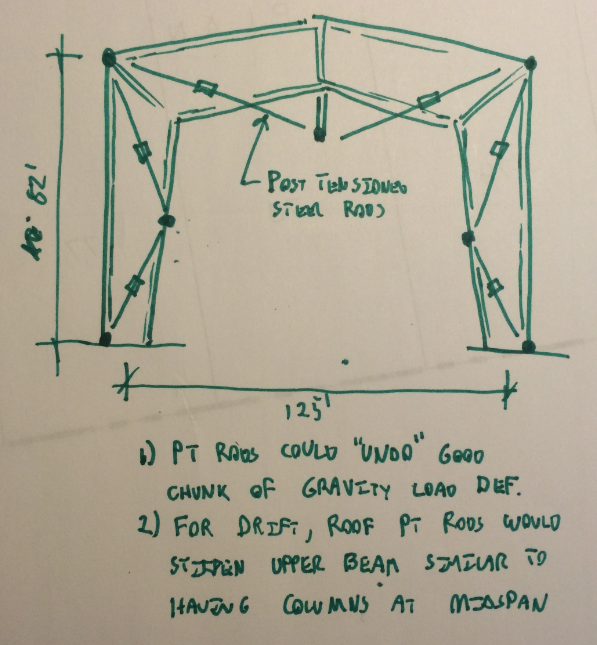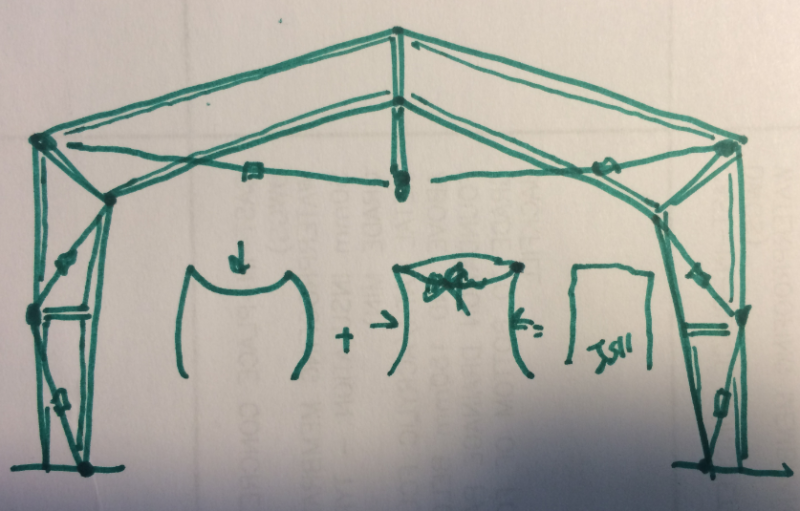ajdg29
Structural
- Sep 10, 2015
- 14
I am currently working on foundation design for a PEMB in Texas. There are three frames that have heavy moment reactions along with the reactions in the X & Y planes. This moment is roughly 2,500k-ft when looking at ASD load combinations for 2009IBC. Shear is roughly 80k, maximum downward load is 276k and uplift is 200k.
My question is what is typically done for a situation like this. As of right now, I was planning on extending the leg/base plate and providing a buried pad footing to support the vertical load, with a deep grade beam running over the top to take out the moment. I would weld rebar to the column to take out the force couple cause by the moment into the grade beam.
Is this this best way? The PEMB engineer said they typically just provide a connection to the finished floor level. The base plate they are providing at these connections are built up and are about 5'-6" wide between bolts to take out the moment with the 1-3/4" diameter 105ksi bolts. I'm just not sure that is the best way to resolve the high loads. Any direction would be appreciated. Thanks.
My question is what is typically done for a situation like this. As of right now, I was planning on extending the leg/base plate and providing a buried pad footing to support the vertical load, with a deep grade beam running over the top to take out the moment. I would weld rebar to the column to take out the force couple cause by the moment into the grade beam.
Is this this best way? The PEMB engineer said they typically just provide a connection to the finished floor level. The base plate they are providing at these connections are built up and are about 5'-6" wide between bolts to take out the moment with the 1-3/4" diameter 105ksi bolts. I'm just not sure that is the best way to resolve the high loads. Any direction would be appreciated. Thanks.


